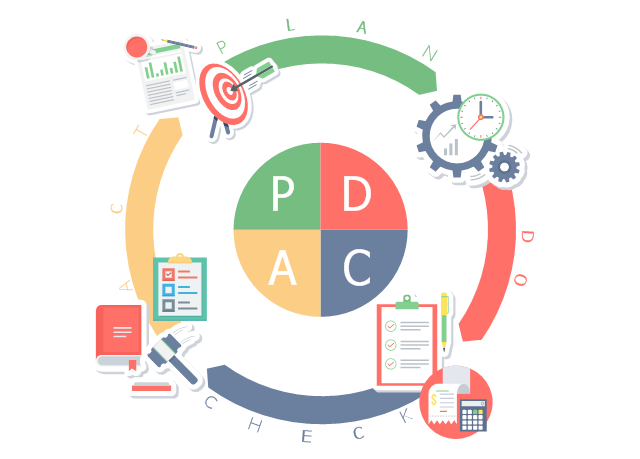What is ISO 9001?
ISO 9001 is the international standard for Quality Management Systems (QMS), published by ISO (the International Organization for Standardization). The standard was most recently updated in 2015, and is referred to as ISO 9001:2015. In order to be released and updated, ISO 9001 had to be agreed upon by a majority of member countries so that it would become an internationally recognized standard, which means it is accepted by a majority of countries worldwide.
What is a Quality Management System?
The Quality Management System, which is often referred to as a QMS, is a collection of policies, processes, documented procedures and records. This collection of documentation defines the set of internal rules that will govern how your company creates and delivers your product or service to your customers. The QMS must be tailored to the needs of your company and the product or service you provide, but the ISO 9001 standard provides a set of guidelines to help make sure that you do not miss any important elements that a QMS needs to be successful.
What does ISO 9001 about?
The ISO 9001 structure is split into ten sections. The first three are introductory, with the last seven containing the requirements for the Quality Management System. Here is what the seven main sections are about:
Section 5: Leadership – The leadership requirements cover the need for top management to be instrumental in the implementation of the QMS. Top management needs to demonstrate commitment to the QMS by ensuring customer focus, defining and communicating the quality policy and assigning roles and responsibilities throughout the organization.
Section 6: Planning – Top management must also plan for the ongoing function of the QMS. Risks and opportunities of the QMS in the organization need to be assessed, and quality objectives for improvement need to be identified and plans made to accomplish these objectives.
Section 7: Support – The support section deals with management of all resources for the QMS, covering the necessity to control all resources, including human resources, buildings and infrastructure, the working environment, monitoring and measurement resources and organizational knowledge. The section also includes requirements around competence, awareness, communication and controlling documented information (the documents and records required for your processes).
Section 8: Operation – The operation requirements deal with all aspects of the planning and creation of the product or service. This section includes requirements on planning, product requirements review, design, controlling external providers, creating and releasing the product or service and controlling nonconforming process outputs.
Section 9: Performance evaluation – This section includes the requirements needed to make sure that you can monitor whether your QMS is functioning well. It includes monitoring and measuring your processes, assessing customer satisfaction, internal audits, and ongoing management review of the QMS.
Section 10: Improvement – This last section includes the requirements needed to make your QMS better over time. This includes the need to assess process nonconformity and taking corrective actions for processes.
These sections are based on a Plan-Do-Check-Act cycle, which uses these elements to implement change within the processes of the organization in order to drive and maintain improvements within the processes.

